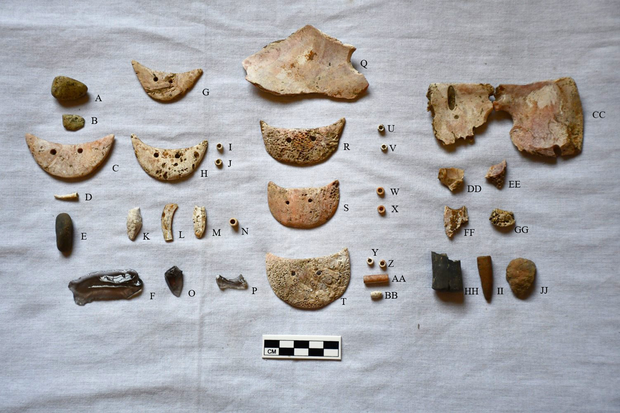A pregnant woman believed to have lived over a thousand years ago in Ecuador’s coastal region may have been part of ritual sacrifice or punishment, according to archaeologists who excavated her remains in 2022.
In a study published last month by Cambridge University Press on behalf of the Society for American Archaeology, experts detailed their analysis of the remains of the young woman, dubbed Burial 10, which dated between AD 771 and AD 953. She was approximately 17 to 20 years old at the time of her death, and her hands and left leg were removed at or near the time of her death, researchers said.
Kathryn Killacky/Cambridge University Press/Society for American Archaeology
Archaeologists found that her burial is significant because she was pregnant at the time. The young woman’s remains showed a cranial fracture and cut marks on her hand bones, which led them to hypothesize that she may have been sacrificed.
“Perimortem trauma, including a cranial fracture and cutmarks on hand bones, perimortem removal of the hands and left leg, and other body manipulation suggest she was sacrificed, a rare event for coastal Ecuadorian peoples,” researchers wrote.
Although human sacrifice in coastal Ecuador is rare, the positioning of the body and missing limbs suggest possible ritual significance, the study said.
Her eyes were covered with two ark clam shells. There was a large green clay stone nearby and several ceramic fragments on her forehead, according to the study. Crescent-shaped spondylus mascaras, or mollusk shells, were found around the body.
She was also buried with spondylus pendants and beads, known as chaquira, from various cultural traditions and periods.
Cambridge University Press/Society for American Archaeology
The woman is believed to be part of the Manteño people, who lived along the Ecuadorian coast and survived by agriculture and seafaring, but the eye coverings were not consistent with typical Manteño burials, researchers said. The green stone represented a link between death and fertility for Valdivian burials, a different group of coastal people which predated the Manteño by nearly 2,000 years, according to experts. Mascaras were also typically linked to practices of Valdivians.
“To accumulate so many artifacts required purposeful collection and curation before inclusion in this burial,” the study said. “Interpretation of this burial must ultimately consider these repeated emphases and ties to the past to understand the reasons for this enigmatic burial.”
The burial also included a burnt offering placed in the thoracic cavity, researchers said. However, such rituals have been found to occur later between AD 991-1025, which would indicate that the woman’s grave was revisited and possibly used for other rituals.
www.cbsnews.com



